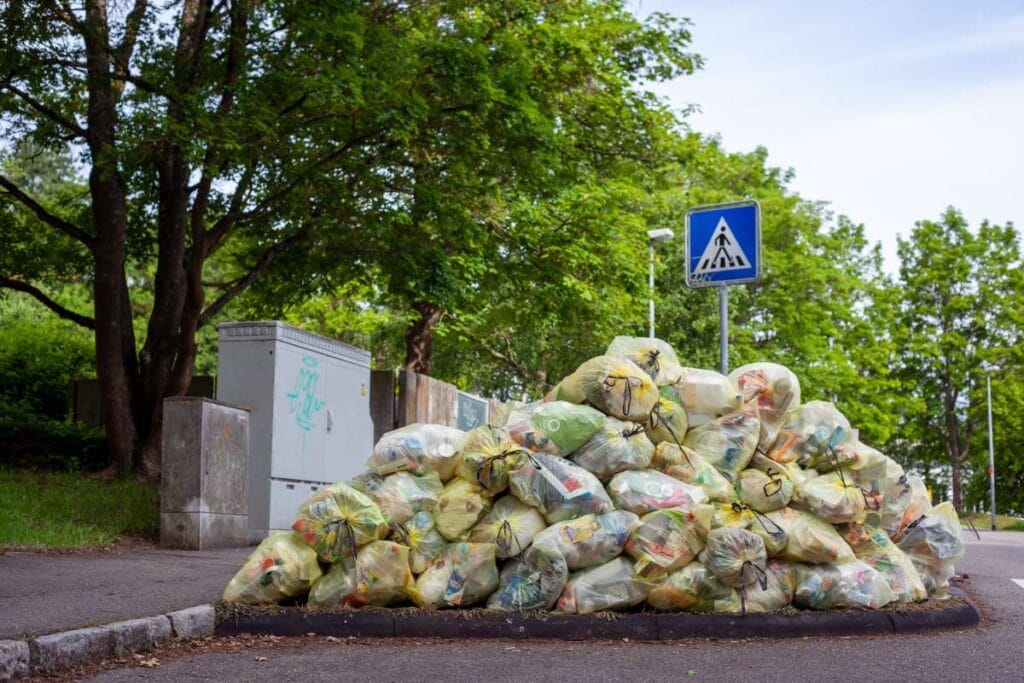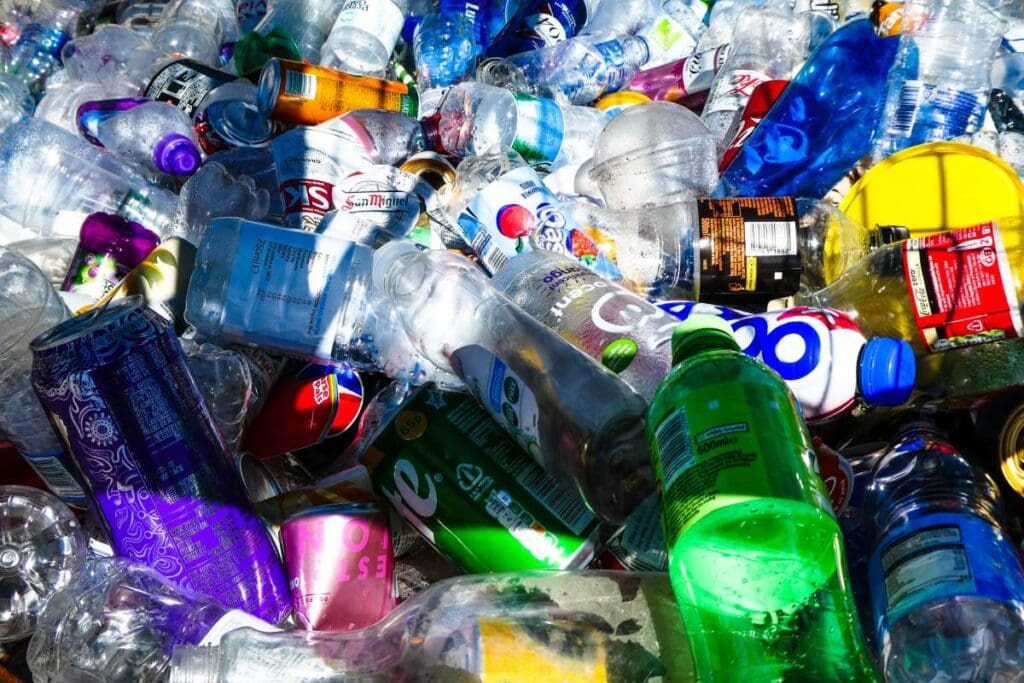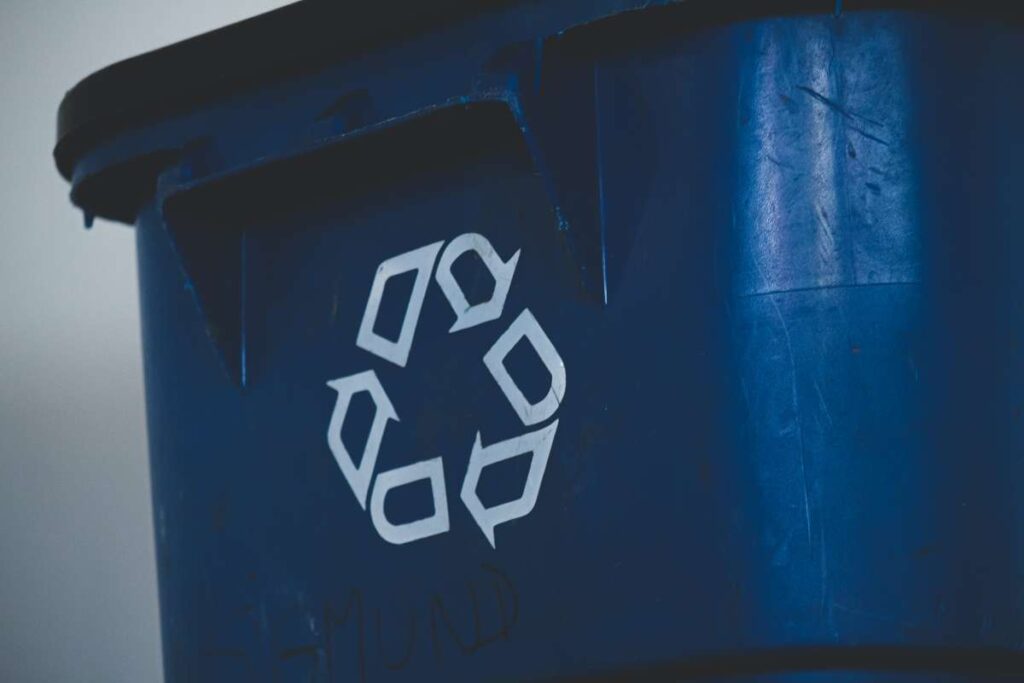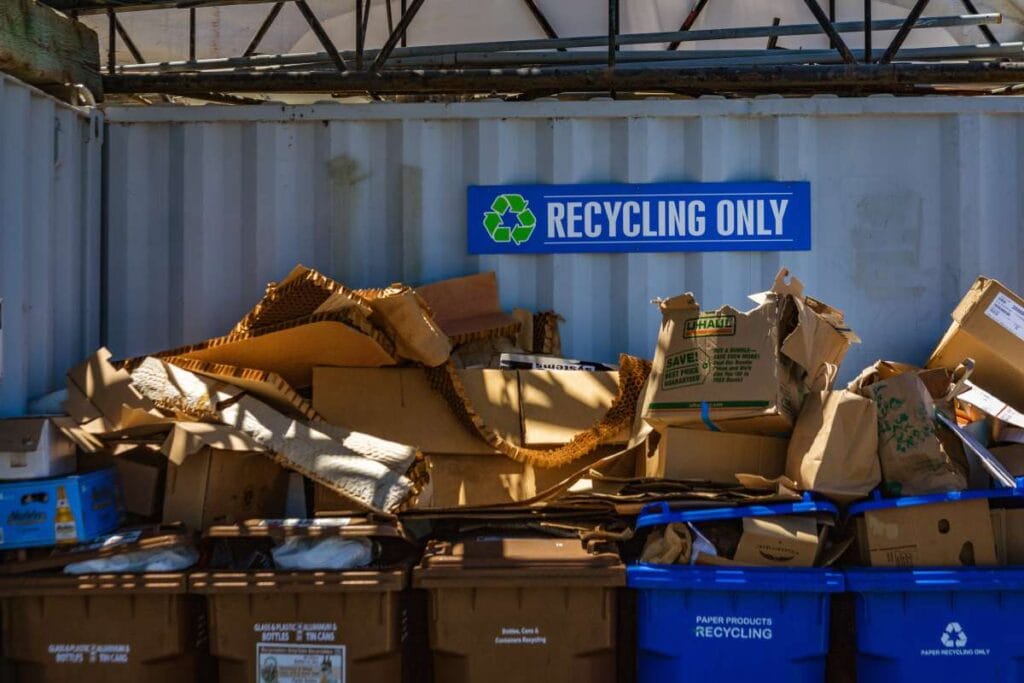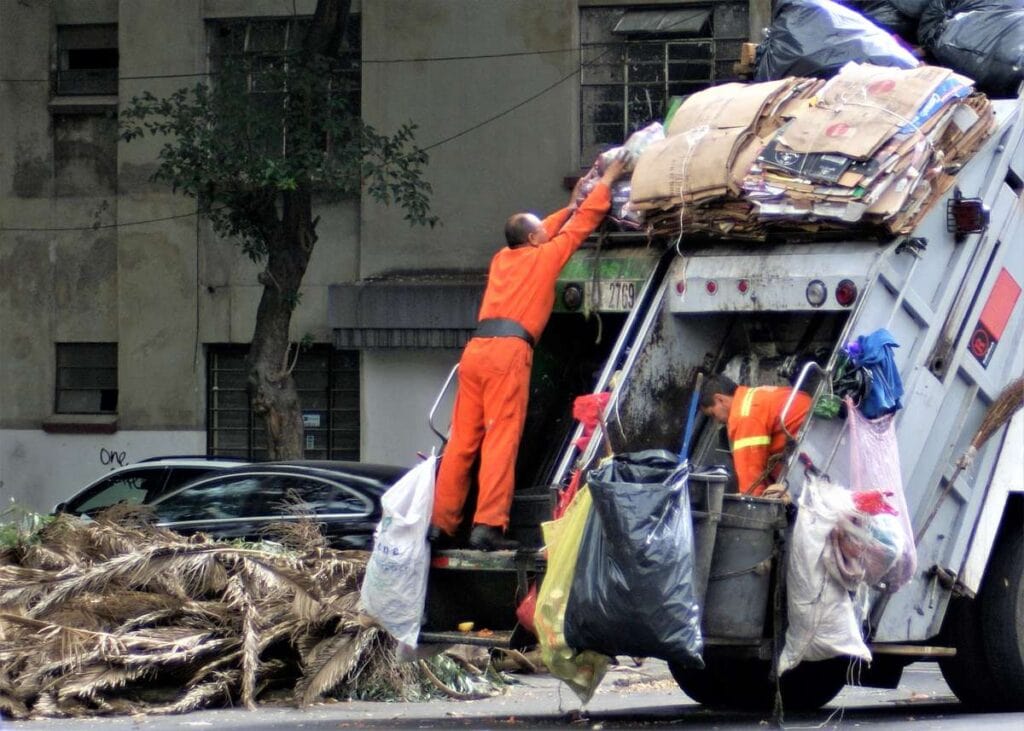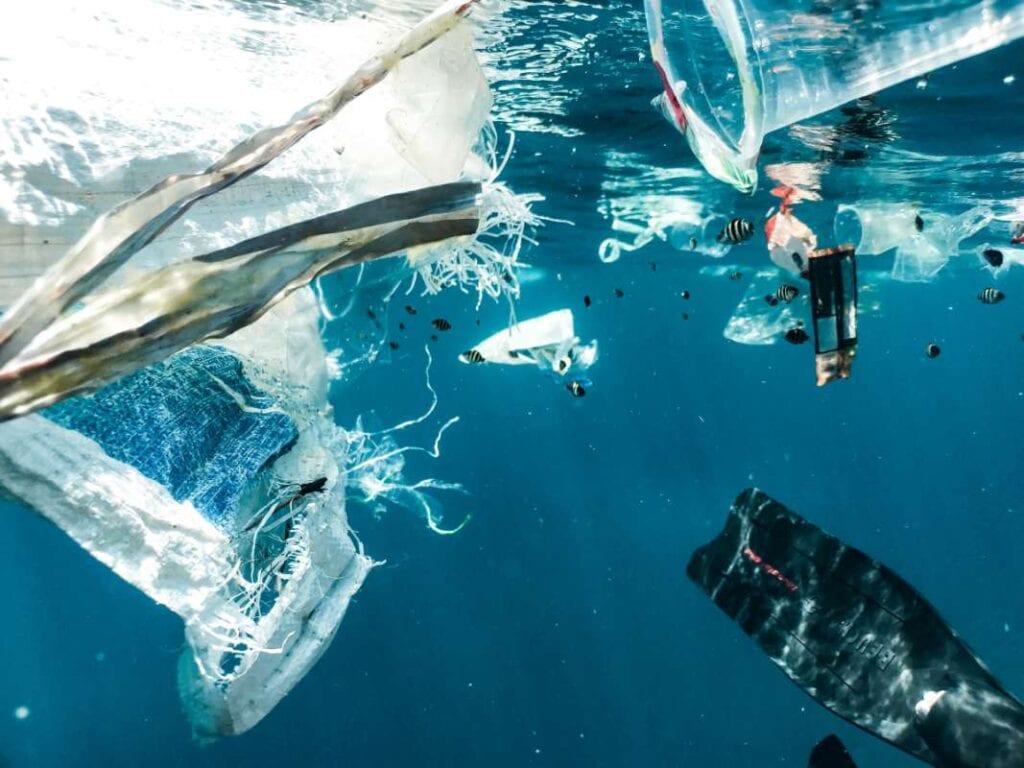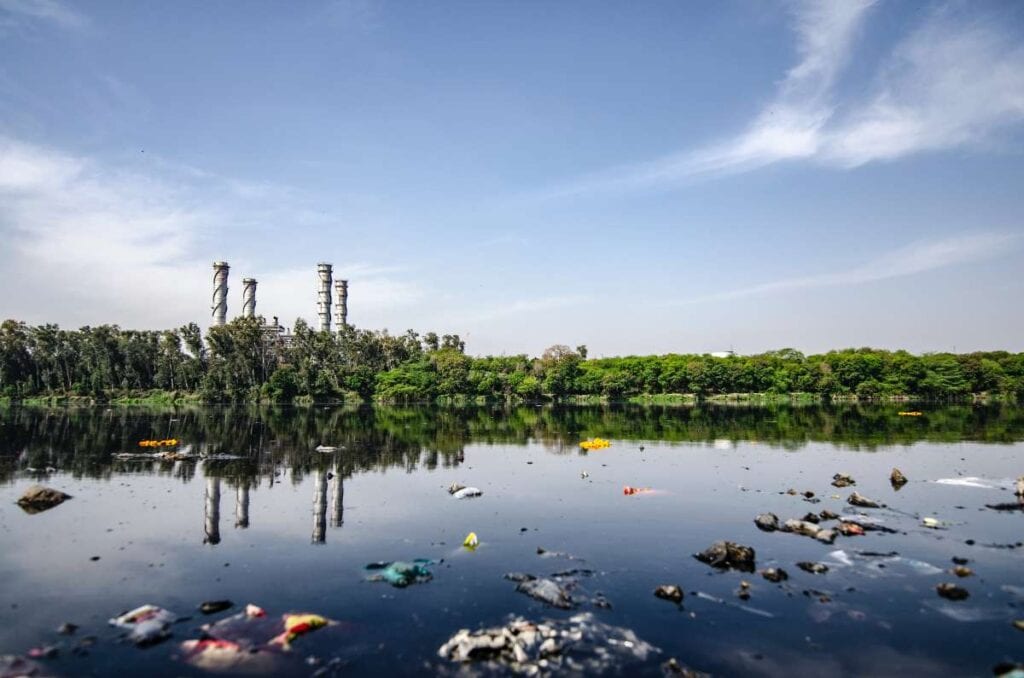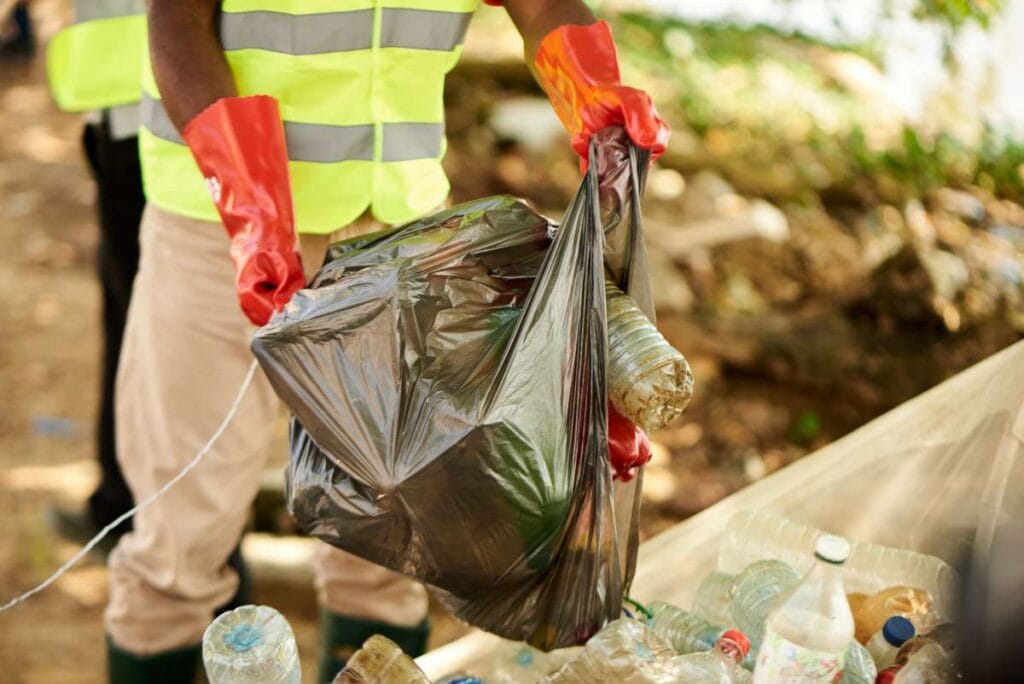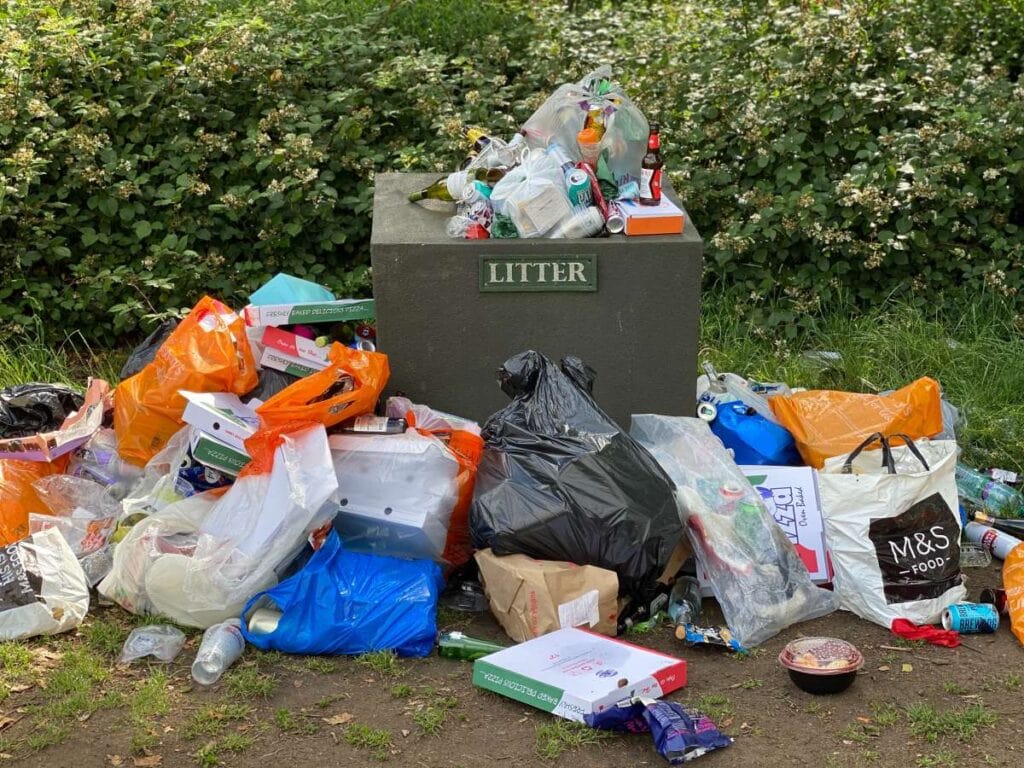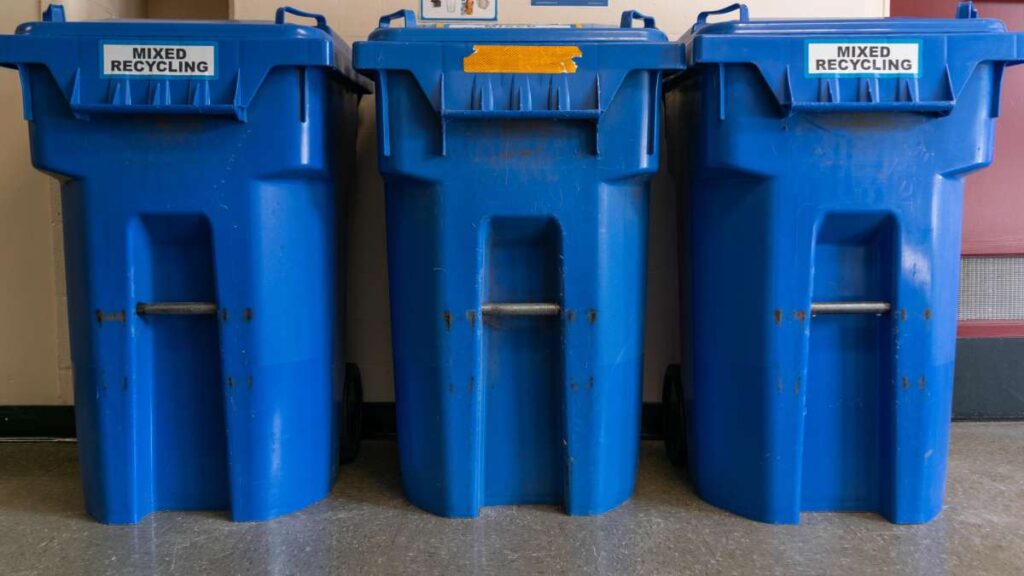A growing global issue, illegal dumping has serious consequences for local communities. This refers to the illegal disposal of trash, chemicals, and other potentially harmful substances. If dumped in the wrong location, these materials can have devastating effects on our environment, health, and standard of living.
There are a wide variety of unforeseen risks associated with illegal dumping. Illegal dumping has many negative consequences, including the pollution of water and soil, the harming of wildlife and the spread of disease. Discover the hidden dangers of illegal dumping and its effects on our environment and communities in this article.
Many cities around the world face the serious problem of illegal dumping. This refers to dumping trash in unapproved areas, like fields, roadways, or bodies of water. Humans, animals, and the planet as a whole are all in grave danger from this practice. The hidden dangers of illegal dumping and its effects on communities will be discussed in this article. Some measures to kerb this behaviour and encourage eco-friendly waste disposal methods will also be discussed.
What Is Illegal Dumping?
Whether on public or private property, illegal dumping occurs when trash is dumped or caused to be dumped without the proper permits or justification. Local and state governments are constantly challenged by the issue of illegal dumping. Our State's economy and environment suffer greatly from illegal dumping and litter. Economic growth, investment, and the recruitment of new businesses and residents are all discouraged by illegal dumping.
Furthermore, millions of dollars are spent every year cleaning up after illegal dumping. Polluting state waters (such as groundwater, streams, rivers, ponds, lakes, etc.), damaging soil quality, impacting air quality (due to open burning activities), and having a negative effect on wildlife are all potential outcomes of illegal dumping.
Effects Of Illegal Dumping On Our Environment
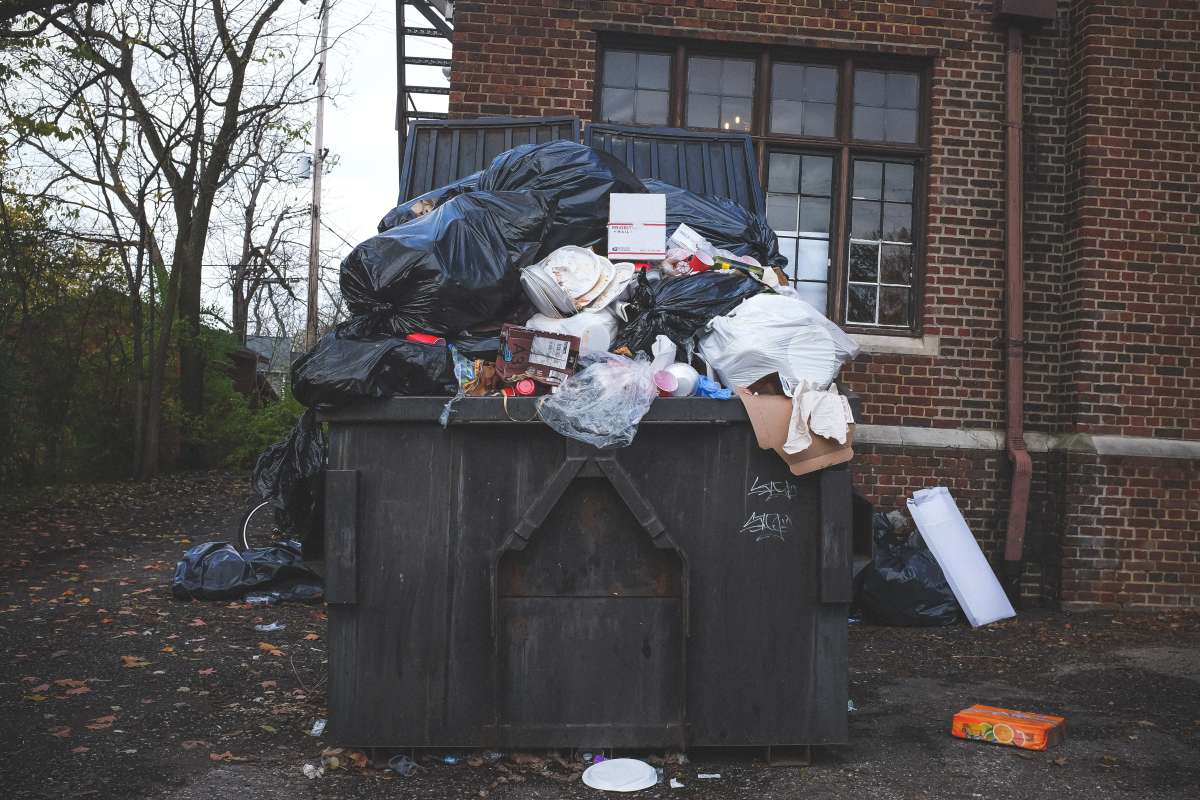
Illegal Dumping Damages the Environment
Illegal dumping is a major contributor to the region's land, water, soil, and air pollution problems. The waste's chemical and non-biodegradable components contaminate groundwater and soil, which in turn affects the physical environment and waterways.
In addition to affecting agriculture, wildlife, and the environment as a whole, the waste can spread weeds and pests. Animals, both wild and domestic, can perish if they ingest waste materials like plastics and chemicals.
Illegal Dumps Can Be Fire Hazards
Wildfires can be exacerbated by the illegal disposal of flammable materials like chemicals, tyres, household trash, used auto parts, hazardous medical waste, and green waste. The butts of cigarettes can also be a fire hazard. These wastes pose an immediate fire hazard due to their combustibility and their susceptibility to rapid decomposition in landfills.
When dangerous materials are burned, they release toxic air particles that can be inhaled by humans and animals; this can have devastating effects on local wildlife and can also contaminate the ground and drinking water.
Dumped Rubbish Lowers Property Value and Tourism
Dumping illegal waste on the private property immediately devalues it. In addition, areas that have been used as illegal dumping grounds often attract other forms of criminal activity.
Dumping in forested areas or along highways can be particularly offensive due to the stench and litter that result.
Health and Safety Risks
Toxic substances, sharp objects, white appliances, nappies, contaminated medical waste, asbestos, and tyres are just some of the things that can be found in illegally dumped materials. Any time a child handles, ingests, or plays with these materials, they are putting themselves at serious risk.
Child suffocation is another risk when using a refrigerator with a door. Tyres can provide a breeding ground for mosquitoes, medical waste with pathogens can spread diseases rapidly due to the exponential growth of harmful bacteria, and sharp objects can cause serious injury if they fall into the wrong hands.
The Entire Community is Put at Risk
Illegal dumping poses a threat to the community as a whole, and this is something that may never become crystal clear. Accidents can occur when objects like tyres, construction debris, and tree stumps are left in the roadway.
In addition to providing a haven for disease and leading to flooding, illegal dumpsites can block stormwater drainage systems.
Effects on Birds, Animals, and Plants
Wildlife suffers greatly as a result of illegal dumping. Dumping trash in forests and other natural areas releases toxic chemicals. Diseases can be transmitted from animal to animal through the food chain if animals ingest trash contaminated with harmful bacteria. Trash dumping can alter the environment, which can be harmful to wildlife.
Many species of animals have strong reactions to disruptions in their habitats. Since animals seek out natural habitats that are free of contaminants, illegal dumping may force them to relocate.
When soil is contaminated with trash, plants are also negatively impacted. In addition, some garbage compounds may change the soil's pH. Due to their sensitivity to changes in soil acidity and other elements, plants may respond negatively to illegal dumping.
The illegal disposal of waste also has a major impact on aquatic life. Many of these water organisms are harmed by the waste compounds that are dumped illegally in bodies of water, and some of them may even perish as a result.
Trash disposal has the potential to harm wildlife, including birds. When there is a lot of illegal garbage around, bird populations can drop because birds eat so many insects and worms. Because of this, there is a possibility that bird populations will decline as a result of a lack of food.
It Costs High Amounts of Taxpayers' Money
Every year, hundreds of thousands of dollars in taxpayer funds are used to clean up the mess left by illegally dumped trash. There is always a significant cost to municipalities to restore ecosystems and infrastructure that have been harmed by illegal dumping.
The Impact On Our Communities
Community health and safety are also at risk when people dump trash illegally. Dumping trash in undesignated areas or close to residential areas degrades the aesthetic quality of the area, as well as the health and safety of the residents.
- Damage to Property: Pests and rodents drawn to garbage dumped in inappropriate areas can wreak havoc on homes and other buildings.
- Because it fosters a sense of abandonment and lawlessness, illegal dumping can also increase crime rates. This may lead to an increase in criminal activity, such as theft and vandalism.
- People in the communities where illegal dumping occurs are exposed to an increased risk to their health. Illegal dumping causes pollution that can irritate the skin and cause breathing problems.
Why Do People Engage In Illegal Dumping?
Some people continue to engage in illegal dumping despite the many risks and dangers associated with it. Several factors could be at play here.
- The consequences of illegal dumping may be lost on some people.
- It's possible that they're oblivious to the potential hazards to people and the planet that this method poses.
- Some people may resort to illegal dumping because it's more convenient than doing the right thing when it comes to trash. They might not want to spend the time and energy required to properly dispose of items.
- The price of properly and legally discarding trash can be out of reach for some people. They might not have access to legal disposal sites, or they might be unwilling to pay the costs associated with proper disposal.
- Sometimes, criminal enterprises like drug smuggling and narcotics trafficking are linked to illegal dumping. Illegal dumping could be used by such groups to destroy evidence or hide from authorities.
The risks and repercussions of illegal dumping must be understood regardless of the motivations behind it. We can lessen the damage that illegal dumping does to our environment and communities by spreading education and encouraging responsible waste management.
Smart Solutions To Illegal Dumping

Cooperative Reporting of Illegal Dumping
People in any society or community can organise to stop illegal dumping. People who partake in illegal dumping often do so knowingly, and they are constantly on the lookout for locations that are overlooked by environmental regulators.
People's willingness to step up and report instances of illegal dumping is crucial to reducing the problem. The local community and government agencies should work together as one unit to implement this strategy's goals in the areas of environmental protection, public safety, and infrastructure development.
Law Enforcement
Prosecutions and law enforcement are crucial in the fight against illegal dumping. Instead of spending millions of dollars on cleanup efforts, authorities can have a special task force monitor sites prone to illegal dumping.
Volunteer or civilian reports of illegal dumping should be taken seriously, and the person who was reported should be prosecuted.
It's a preventative measure that has a chance of succeeding in the long run against the menace in question. In order to emphasise the seriousness of the problem, cities and administrative districts should impose harsher penalties for illegal dumping.
Education, Awareness, and Publicising Success
Educating and raising awareness in the communities most impacted by illegal dumping can be very helpful in finding solutions to the problem. It raises awareness of the problems caused by illegal dumping, encourages people to get involved, and may lead to a greater number of citizen volunteers keeping an eye out for and reporting such activity.
The media's coverage of successes, especially in terms of arrests, can send a strong message to the public that illegal dumping is unacceptable and motivate people to stop engaging in it.
Lowering Waste Management Site Disposal Fees and Raising Illegal Dumping Fines
To get more people to use the legally mandated waste disposal systems, environmental authorities and local governments need to lower disposal fees.
The regulatory bodies responsible for preventing illegal dumping also need to increase penalties in order to deter the practice. To accomplish this, we must reevaluate the pricing and licencing of dumping services, as well as the penalties for illegal dumping.
Illegal dumping can also be reduced by encouraging recycling initiatives, such as making specific locations available for the free collection of old or unused furniture, appliances, and other household items for recycling.
Some have suggested that the cost of using proper waste disposal channels may actually be higher than the cost of dumping illegally and paying a fine. This method can make societies more resistant to the effects of illegal dumping.
Reducing, Recycling, and Reusing
To begin, increased waste generation rates are a primary cause of illegal dumping. Waste minimisation is an effective strategy for lowering both the incidence and impact of illegal dumping. Buying and using only what is strictly necessary can greatly cut down on one's waste.
Reduce the number of appliances, white goods, and furniture that ends up in landfills by encouraging reuse methods like donating and selling gently used items.
Modern Technology and Better Control Mechanisms
To lessen the impact of illegal waste disposal, there must be sufficient control instances for monitoring waste disposal. It is unlikely that people will persist in dumping trash illegally if they are aware of the steep penalties associated with doing so and the high probability that they will be caught by the authorities.
Waste management is another area where technological progress can be put to use. These developments have the potential to reduce the cost of waste processing and disposal, which would encourage responsible waste management and discourage illegal dumping.
FAQs About Illegal Dumping
Illegal dumping refers to the unauthorized disposal of waste materials, such as garbage, chemicals, and other hazardous substances.
The hidden dangers of illegal dumping include soil contamination, water pollution, air pollution, hazardous waste, property damage, increased crime, and health risks.
Commonly illegally dumped waste materials include construction and demolition debris, household garbage, hazardous waste, tires, and electronics.
Illegal dumping can cause significant environmental damage, including soil and water contamination, which can harm plants and animals. It can also lead to air pollution, which can impact human health.
Illegal dumping can pose serious health risks to humans, particularly if hazardous waste is involved. Exposure to hazardous waste can cause respiratory problems, skin irritations, and other health issues.
Conclusion
Illegal dumping is a global issue that has serious consequences for local communities. It involves the disposal of trash, chemicals, and other potentially harmful substances in unapproved areas such as fields, roadways, or bodies of water.
This harmful activity negatively impacts the environment, causing pollution of water and soil, harm to wildlife, and spread of diseases. It can also be a fire hazard, lower property value, and pose health and safety risks. Illegal dumping has a major impact on soil, aquatic life, wildlife, taxpayer funds, community health and safety, property damage, crime rates, and people's health.
Animals, both wild and domestic, can perish if they ingest waste materials like plastics and chemicals. Moreover, it poses a threat to the community as a whole, as it can cause accidents, block stormwater drainage systems, and alter the environment, which can be harmful to birds, animals, and plants.
Illegal dumping can be found with toxic substances, sharp objects, white appliances, nappies, contaminated medical waste, asbestos, and tyres, and they can cause serious injury if they fall into the wrong hands. It costs taxpayers' money to clean up the mess left by illegally dumped trash, degrades the aesthetic quality of the area, damages property, fosters a sense of abandonment and lawlessness, and increases crime rates.
People continue to engage in illegal dumping despite the risks and dangers associated with it. The consequences of illegal dumping can be lost on some people, who may resort to it due to convenience, lack of access to legal disposal sites, or unwillingness to pay the costs associated with proper disposal.
Smart solutions to illegal dumping include cooperative reporting of illegal dumping, law enforcement, and imposing harsher penalties for illegal dumping. People in any society or community can organise to stop illegal dumping, and authorities should have a special task force to monitor sites prone to illegal dumping.
Education, awareness, and publicising success are key to finding solutions to illegal dumping. Environmental authorities and local governments need to lower disposal fees and increase penalties to reduce the incidence and impact of illegal dumping.
Recycling initiatives can make societies more resistant to the effects of illegal dumping, while waste minimisation is an effective strategy for lowering both the incidence and impact of illegal dumping. Finally, modern technology and better control mechanisms can be used to reduce the cost of waste processing and disposal.
Content Summary
- Illegal dumping refers to the illegal disposal of trash, chemicals, and other potentially harmful substances.
- Illegal dumping has serious consequences for local communities and has many negative consequences.
- It is a growing global issue that affects the environment, health, and standard of living.
- Many cities around the world face the serious problem of illegal dumping.
- Illegal dumping occurs when trash is dumped or caused to be dumped without the proper permits or justification.
- Local and state governments are constantly challenged by the issue of illegal dumping.
- The economy and environment suffer greatly from illegal dumping and litter.
- Millions of dollars are spent every year cleaning up after illegal dumping.
- Illegal dumping is a major contributor to the region's land, water, soil, and air pollution problems.
- The waste's chemical and non-biodegradable components contaminate groundwater and soil, which in turn affects the physical environment and waterways.
- Illegal dumps can be fire hazards and exacerbate wildfires.
- When dangerous materials are burned, they release toxic air particles that can be inhaled by humans and animals.
- Dumped rubbish lowers property value and tourism.
- Dumping on private property immediately devalues it.
- Areas that have been used as illegal dumping grounds often attract other forms of criminal activity.
- Illegal dumping poses a threat to the community as a whole.
- Accidents can occur when objects like tyres, construction debris, and tree stumps are left in the roadway.
- Illegal dumpsites can block stormwater drainage systems and lead to flooding.
- Wildlife suffers greatly as a result of illegal dumping.
- Diseases can be transmitted from animal to animal through the food chain if animals ingest trash contaminated with harmful bacteria.
- Illegal dumping may force animals to relocate.
- The illegal disposal of waste also has a major impact on aquatic life.
- Trash disposal has the potential to harm wildlife, including birds.
- It costs high amounts of taxpayers' money to clean up illegally dumped trash.
- There is always a significant cost to municipalities to restore ecosystems and infrastructure that have been harmed by illegal dumping.
- Toxic substances, sharp objects, contaminated medical waste, asbestos, and tyres are just some of the things that can be found in illegally dumped materials.
- Child suffocation is a risk when using a refrigerator with a door, and sharp objects can cause serious injury.
- Dumping trash in forests and other natural areas releases toxic chemicals and can alter the environment.
- Illegal dumping may lead to a decline in bird populations due to a lack of food.
- Illegal dumping has a significant impact on community health and safety.
